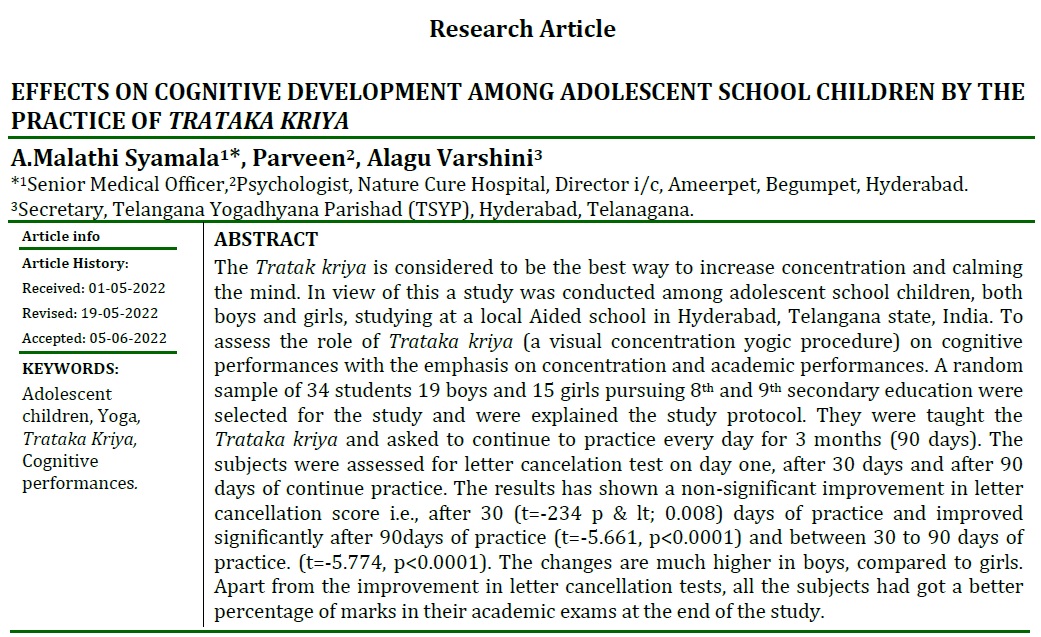Effects on Cognitive Development Among Adolescent School Children by the Practice of Trataka Kriya
DOI:
https://doi.org/10.47070/ijapr.v10i6.2428Keywords:
Adolescent children, Yoga, Trataka Kriya, Cognitive performances.Abstract
The Tratak kriya is considered to be the best way to increase concentration and calming the mind. In view of this a study was conducted among adolescent school children, both boys and girls, studying at a local Aided school in Hyderabad, Telangana state, India. To assess the role of Trataka kriya (a visual concentration yogic procedure) on cognitive performances with the emphasis on concentration and academic performances. A random sample of 34 students 19 boys and 15 girls pursuing 8th and 9th secondary education were selected for the study and were explained the study protocol. They were taught the Trataka kriya and asked to continue to practice every day for 3 months (90 days). The subjects were assessed for letter cancelation test on day one, after 30 days and after 90 days of continue practice. The results has shown a non-significant improvement in letter cancellation score i.e., after 30 (t=-234 p & lt; 0.008) days of practice and improved significantly after 90days of practice (t=-5.661, p<0.0001) and between 30 to 90 days of practice. (t=-5.774, p<0.0001). The changes are much higher in boys, compared to girls. Apart from the improvement in letter cancellation tests, all the subjects had got a better percentage of marks in their academic exams at the end of the study.
Downloads



